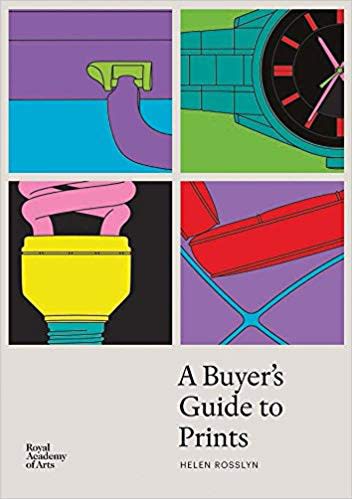Engraving
Explore prints from our Exhibitors
Gerard de Jode after Onuphrio Panvinio
Amplissimi ornatissimique triumphi, Romae, apud Jo: Jacobum de Rubeis ad Templum Sae. Mae. de Pace, cum Privil. Sum. Pont. et Sup. perm. [Rome, c.1650]
Copper engraving
15.5 x 36.5 cm
6 1/8 x 14 3/8 in
(each)
6 1/8 x 14 3/8 in
(each)
Sanders of Oxford
Online only
Online only
£ 1,750.00
A series of twelve plates, printed three to a sheet over four sheets, depicting the processional order of the Roman Triumph, the celebrations held to commemorate the achievements and victories...
A series of twelve plates, printed three to a sheet over four sheets, depicting the processional order of the Roman Triumph, the celebrations held to commemorate the achievements and victories of victorious generals. The series includes a decorative title plate, with the lengthy title enclosed in a strapwork cartouche surrounded by weapons of war, and eleven illustrative plates identifying each of the individuals, groups, and components of the Triumph, beginning at the Capitoline, the Triumph’s final destination, and working backwards to the adlocutio given by the victorious general to the army before the beginning of the procession.
Each plate is captioned with part of an explanatory text, which reads: ‘Triumphi Maioris, in Urbe Romana Ob Victoriam Celebrati Typus. Ne quis picturae huius Veritatem requirat existimetue fictam esse vel ingenio alicuius excogitatam operae precium duxi hic subiicere scriptorum nomina ex quibus ea desumpta est Dionisius libro quinto in triumpho Poplicolae, Iosephus libro Septimo Cap. 23. de bello Iudaico, Valerius Maximus libro 2, Cap. 3 de iure triumphali, Ioannes Zonara historiarum tomo 2 Plutarchus in Vita Pauli Aemilii, Appianus Alexandrinus in Lybico, Servius super Vergilium, et postremo, Marcus Tul. Cicero de Triumphali pompa in Lucium Pisonem. Triumphi Maioris usus Permansisse Constat ad Iustiniani Tempora.’
‘An illustration of the Greater Triumph [as opposed to the Ovatio - a lesser triumph], celebrated in the City of Rome for victory. Lest anyone should suppose the truth of this image to be a fiction, or the worth of the work to be an ingenious invention, I have decided to submit here the names of the authors from which it is taken: Dionysius in the fifth book in the Triumph of Poplicola, Josephus in the Seventh Book, Chapter 23 on the Jewish War, Valerius Maximus Book 2, Chapter 3 on the triumphal right, John Zonaras in volume 2 of the Histories, Plutarch in the Life of Aemilius Paulus, Appian of Alexandria in the Libycus [Punic Wars], Servius on Vergil, and finally, Marcus Tullius Cicero on the triumphal procession of Lucius Piso. It is certain that the use of the Greater Triumph continued until the time of Justinian.’
The full title on the first plate reads: ‘Amplissimi ornatissimiq. triumphi, Uti L. Paulus de rege Macedonum Perse capto, P. Africanus Aemilianus de Carthagenensibus excisis. C. N. Pompeius Magnus ex oriente, Julius Augustus, Vespasianus, Traianus, et alii Imperatores Romani, Triumpharunt ex antiquissimis Lapidum, nummorum et librorum monumentis accuratissima descriptio: Onuphrii Panvinii Veronensis inventoris Opera, et aeneis formis Antwerpiae primum, nunc autem Romae apud Jo. Jacobum de Rubeis ad Templ Sae. Mae. Cum Privil. Sum. Pont., et Sup. perm.’
‘The most magnificent and ornamented triumph, as when Lucius Paulus captured the Macedonian king Perseus, Publius Aemilianus Africanus destroyed the Carthaginians, Gnaeus Pompeius Magnus triumphed in the East, Julius, Augustus, Vespasian, Trajan and other Roman Emperors also triumphed, most accurately described from the most ancient monuments of stone, coins, and books: The work of the inventor Onuphrio Panvinio of Verona, first [issued] in bronze engravings in Antwerp, now in Rome by Giovanni Giacomo de Rossi by the Church of Saint Mary, with the Privilege of the Highest Pontiff [the Pope] and higher Permission.’
The history of the series’ publication is a complex one. Examples like the current example published by de Rossi were usually issued alongside a monumental and very impressive eight sheet map of the city of Rome in antiquity, originally designed by Etienne Duperac and issued in 1574 under the title Urbis Romae Sciographia. The addition of the triumphal plates to the edges of the map, whilst visually impressive, was a conceit of de Rossi, and the two works are otherwise unconnected, though as Duperac had illustrated a number of Panvinio’s works, it is possible that the combination was due to a misattribution by de Rossi. The de Rossi family’s catalogue at the time of the firm’s dissolution in 1738 attributes the plates of the Amplissimi Ornatissimique Triumphi to Giacomo Lauro, and whilst there are stylistic similarities to many of Lauro’s plates of ancient Roman buildings, artefacts, monuments, and customs, they are almost certainly not the work of Lauro. de Rossi’s own attribution credits Onuphrio Panvinio as their inventor, but is not specific about who carried out the engraving, saying only that they were initially issued in Antwerp, and for this reason they are normally attributed to Gerard de Jode, though Hollstein credits their original inventor not as Panvinio, but Heemskerck, no doubt due to the latter’s love of allegorical depictions of other ‘triumphal’ scenes. The de Jode provenance is most convincing, as in 1596, the series was reissued by his own son Cornelis. A subsequent reissue on 1618 was published by Gottfried van Schaych before the plates were acquired by the de Rossis, who issued them at least twice, as the current example features an alteration to the de Rossi address, as well as a renumbering of the plates to make the title image Plate 1, rather than unnumbered as in earlier states.
Gerard de Jode (1509-1591) was a Dutch mapmaker, geographer, engraver, and bookseller, active in Antwerp in the second half of the sixteenth century. His major achievement was the Speculum Orbis Terrarum (Mirror of the Globe), intended as an answer to the Theatrum Orbis Terrarum of his major rival Abraham Ortelius. Despite his skills as an engraver, the beauty and detail of his maps, and his seniority over his younger competitor, the Speculum was a commercial failure. Following Gerard’s death, the atlas was printed once more by his son Cornelis in 1593, before the plates were sold upon the latter’s death in 1600 to Jan Baptist Vrients.
Onuphrio Panvinio (1529-1568) was an Italian antiquarian, historian, librarian, and Augustinian friar, hailed by his contemporaries for his prolific and all-encompassing enthusiasm for Roman antiquity.
Giovanni Giacomo de Rossi (1627-1691) was an Italian publisher, engraver, bookseller, and antiquarian, and one of the early members of the large and prolific family of de Rossi printers. The printworks was established near the church of Santa Maria della Pace in 1633 by Guiseppe de Rossi, who specialised in producing engravings for designers. Under Giovanni Giacomo and his son Domenico, the workshop reached its zenith, with father and son working on engravings on many diverse subjects, but with a speciality in publishing works of antiquarian interest. Domenico’s friendship and collaboration with the engraver Bartoli and the antiquarian Bellori proved fruitful, and in the period between the early 1690s and Domenico’s death in 1730, the group published numerous works on Roman architecture, sculpture, history, portraiture, ceramics, oil lamps, and funerary iconography. In Domenico’s later life, his connections with the influential Maffei family secured the Rossi imprint Papal privilege. Following Domenico’s death, the Rossi printshop passed to his cousin Lorenzo Filippo de Rossi. In 1738, the firm closed and the collection of plates and prints was purchased by Pope Clement XII, becoming the Calcographia Camerale, then the Regia Calcographia, and finally the current Calcographia Nazionale.
Condition: Strong clean impressions on full sheets. Central horizontal folds. Large printer’s crease to left side of Plate 2.
Each plate is captioned with part of an explanatory text, which reads: ‘Triumphi Maioris, in Urbe Romana Ob Victoriam Celebrati Typus. Ne quis picturae huius Veritatem requirat existimetue fictam esse vel ingenio alicuius excogitatam operae precium duxi hic subiicere scriptorum nomina ex quibus ea desumpta est Dionisius libro quinto in triumpho Poplicolae, Iosephus libro Septimo Cap. 23. de bello Iudaico, Valerius Maximus libro 2, Cap. 3 de iure triumphali, Ioannes Zonara historiarum tomo 2 Plutarchus in Vita Pauli Aemilii, Appianus Alexandrinus in Lybico, Servius super Vergilium, et postremo, Marcus Tul. Cicero de Triumphali pompa in Lucium Pisonem. Triumphi Maioris usus Permansisse Constat ad Iustiniani Tempora.’
‘An illustration of the Greater Triumph [as opposed to the Ovatio - a lesser triumph], celebrated in the City of Rome for victory. Lest anyone should suppose the truth of this image to be a fiction, or the worth of the work to be an ingenious invention, I have decided to submit here the names of the authors from which it is taken: Dionysius in the fifth book in the Triumph of Poplicola, Josephus in the Seventh Book, Chapter 23 on the Jewish War, Valerius Maximus Book 2, Chapter 3 on the triumphal right, John Zonaras in volume 2 of the Histories, Plutarch in the Life of Aemilius Paulus, Appian of Alexandria in the Libycus [Punic Wars], Servius on Vergil, and finally, Marcus Tullius Cicero on the triumphal procession of Lucius Piso. It is certain that the use of the Greater Triumph continued until the time of Justinian.’
The full title on the first plate reads: ‘Amplissimi ornatissimiq. triumphi, Uti L. Paulus de rege Macedonum Perse capto, P. Africanus Aemilianus de Carthagenensibus excisis. C. N. Pompeius Magnus ex oriente, Julius Augustus, Vespasianus, Traianus, et alii Imperatores Romani, Triumpharunt ex antiquissimis Lapidum, nummorum et librorum monumentis accuratissima descriptio: Onuphrii Panvinii Veronensis inventoris Opera, et aeneis formis Antwerpiae primum, nunc autem Romae apud Jo. Jacobum de Rubeis ad Templ Sae. Mae. Cum Privil. Sum. Pont., et Sup. perm.’
‘The most magnificent and ornamented triumph, as when Lucius Paulus captured the Macedonian king Perseus, Publius Aemilianus Africanus destroyed the Carthaginians, Gnaeus Pompeius Magnus triumphed in the East, Julius, Augustus, Vespasian, Trajan and other Roman Emperors also triumphed, most accurately described from the most ancient monuments of stone, coins, and books: The work of the inventor Onuphrio Panvinio of Verona, first [issued] in bronze engravings in Antwerp, now in Rome by Giovanni Giacomo de Rossi by the Church of Saint Mary, with the Privilege of the Highest Pontiff [the Pope] and higher Permission.’
The history of the series’ publication is a complex one. Examples like the current example published by de Rossi were usually issued alongside a monumental and very impressive eight sheet map of the city of Rome in antiquity, originally designed by Etienne Duperac and issued in 1574 under the title Urbis Romae Sciographia. The addition of the triumphal plates to the edges of the map, whilst visually impressive, was a conceit of de Rossi, and the two works are otherwise unconnected, though as Duperac had illustrated a number of Panvinio’s works, it is possible that the combination was due to a misattribution by de Rossi. The de Rossi family’s catalogue at the time of the firm’s dissolution in 1738 attributes the plates of the Amplissimi Ornatissimique Triumphi to Giacomo Lauro, and whilst there are stylistic similarities to many of Lauro’s plates of ancient Roman buildings, artefacts, monuments, and customs, they are almost certainly not the work of Lauro. de Rossi’s own attribution credits Onuphrio Panvinio as their inventor, but is not specific about who carried out the engraving, saying only that they were initially issued in Antwerp, and for this reason they are normally attributed to Gerard de Jode, though Hollstein credits their original inventor not as Panvinio, but Heemskerck, no doubt due to the latter’s love of allegorical depictions of other ‘triumphal’ scenes. The de Jode provenance is most convincing, as in 1596, the series was reissued by his own son Cornelis. A subsequent reissue on 1618 was published by Gottfried van Schaych before the plates were acquired by the de Rossis, who issued them at least twice, as the current example features an alteration to the de Rossi address, as well as a renumbering of the plates to make the title image Plate 1, rather than unnumbered as in earlier states.
Gerard de Jode (1509-1591) was a Dutch mapmaker, geographer, engraver, and bookseller, active in Antwerp in the second half of the sixteenth century. His major achievement was the Speculum Orbis Terrarum (Mirror of the Globe), intended as an answer to the Theatrum Orbis Terrarum of his major rival Abraham Ortelius. Despite his skills as an engraver, the beauty and detail of his maps, and his seniority over his younger competitor, the Speculum was a commercial failure. Following Gerard’s death, the atlas was printed once more by his son Cornelis in 1593, before the plates were sold upon the latter’s death in 1600 to Jan Baptist Vrients.
Onuphrio Panvinio (1529-1568) was an Italian antiquarian, historian, librarian, and Augustinian friar, hailed by his contemporaries for his prolific and all-encompassing enthusiasm for Roman antiquity.
Giovanni Giacomo de Rossi (1627-1691) was an Italian publisher, engraver, bookseller, and antiquarian, and one of the early members of the large and prolific family of de Rossi printers. The printworks was established near the church of Santa Maria della Pace in 1633 by Guiseppe de Rossi, who specialised in producing engravings for designers. Under Giovanni Giacomo and his son Domenico, the workshop reached its zenith, with father and son working on engravings on many diverse subjects, but with a speciality in publishing works of antiquarian interest. Domenico’s friendship and collaboration with the engraver Bartoli and the antiquarian Bellori proved fruitful, and in the period between the early 1690s and Domenico’s death in 1730, the group published numerous works on Roman architecture, sculpture, history, portraiture, ceramics, oil lamps, and funerary iconography. In Domenico’s later life, his connections with the influential Maffei family secured the Rossi imprint Papal privilege. Following Domenico’s death, the Rossi printshop passed to his cousin Lorenzo Filippo de Rossi. In 1738, the firm closed and the collection of plates and prints was purchased by Pope Clement XII, becoming the Calcographia Camerale, then the Regia Calcographia, and finally the current Calcographia Nazionale.
Condition: Strong clean impressions on full sheets. Central horizontal folds. Large printer’s crease to left side of Plate 2.
Join Our Mailing List
* denotes required fields
We will process the personal data you have supplied in accordance with our privacy policy (available on request). You can unsubscribe or change your preferences at any time by clicking the link in our emails.
![Gerard de Jode after Onuphrio Panvinio, Amplissimi ornatissimique triumphi, Romae, apud Jo: Jacobum de Rubeis ad Templum Sae. Mae. de Pace, cum Privil. Sum. Pont. et Sup. perm. [Rome, c.1650]](https://artlogic-res.cloudinary.com/w_1600,h_1600,c_limit,f_auto,fl_lossy,q_auto/artlogicstorage/lopf/images/view/772a1d8081ef36ca856973ac3ddd94e5/londonoriginalprintfair-gerard-de-jode-after-onuphrio-panvinio-amplissimi-ornatissimique-triumphi-romae-apud-jo-jacobum-de-rubeis-ad-templum-sae.-mae.-de-pace-cum-privil.-sum.-pont.-et-sup.jpg)




 A Buyer's Guide to Prints
A Buyer's Guide to Prints